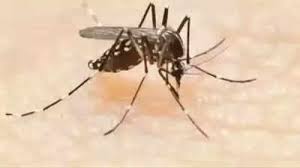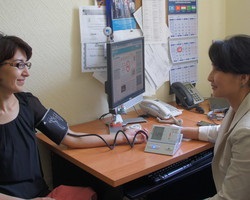As climate change reshapes weather patterns, mosquito-borne diseases are becoming an increasingly serious public health threat, particularly in regions that were once considered safe. In Massachusetts, four recent cases of Eastern equine encephalitis (EEE) have raised alarms. EEE, a rare but severe mosquito-borne disease, causes high fever, seizures, gastrointestinal issues, and behavioral changes. About one-third of those infected succumb to the illness, and survivors often experience long-term neurological problems.
The rising incidence of EEE and other mosquito-borne diseases is closely tied to climate change. Warmer, wetter summers in the northeastern U.S. are creating ideal conditions for mosquitoes to thrive and transmit harmful diseases like EEE. Additionally, the mosquito season is extending, with the onset of warmer weather occurring earlier and lasting later each year. This shift, driven by consistent increases in temperature, is reshaping the risk landscape for diseases like EEE, West Nile Virus, and Zika.
University at Albany experts Alexander Ciota and Oliver Timm are studying the intersection of climate change and mosquito-borne disease transmission, providing insights into how environmental factors are contributing to the rise in disease cases and what can be done to mitigate the risks.
Climate Change’s Impact on Mosquito-Borne Diseases
Alexander Ciota, an associate professor in UAlbany’s College of Integrated Health Sciences and director of the Arbovirus Laboratory at the Wadsworth Center, explains that changes in temperature and precipitation patterns directly influence mosquito populations and the transmission of diseases they carry.
“While precipitation patterns are volatile and can have differential effects on mosquito populations, consistent regional increases in temperature are generally increasing the duration, intensity, and distribution of mosquito-borne virus activity,” Ciota notes. As the temperature rises, mosquitoes develop faster, and the likelihood of virus transmission increases because the heat accelerates viral replication. Moreover, as mosquitoes and viruses frequently mutate, there is a risk that new, more virulent disease variants could emerge.
“Both spring mosquito emergence and cessation of activity in the fall are triggered by environmental cues, primarily temperature,” Ciota adds. “Warming will generally correspond to longer mosquito seasons.”
Vector Movements and Climate Shifts
Oliver Timm, an associate professor in UAlbany’s Department of Atmospheric and Environmental Sciences, focuses on how climate projections will affect public health, particularly in regions like the northeastern U.S. Timm’s research shows that mosquitoes are beginning to move into areas that were previously inhospitable, such as higher-elevation mountain regions.
“Rising temperatures are the key driver of these changes. For example, for West Nile Virus to spread in nature, the optimal temperature is between 73°F and 78°F,” Timm explains. “Our research group developed regional maps which predict that certain regions in New York, especially the Northwestern areas, will begin to see temperatures that support West Nile Virus transmission.”
The implications of these findings are significant. As mosquitoes adapt to new environments, areas that have not historically dealt with mosquito-borne diseases may see an increase in cases. This will require robust public health interventions to monitor and manage the growing threat.
Public Health Recommendations
Given the rising risk of mosquito-borne diseases, experts emphasize the importance of protective measures to reduce exposure to mosquitoes. This includes using insect repellent, wearing long sleeves and pants, installing screens on windows and doors, and removing standing water where mosquitoes breed. Additionally, local governments may need to increase surveillance and control efforts to manage mosquito populations more effectively.
As Ciota and Timm’s research shows, the battle against mosquito-borne diseases is becoming more urgent in the face of climate change. Preparing for this growing public health challenge requires a combination of scientific research, public awareness, and strategic interventions to protect communities from the harmful effects of diseases like EEE, West Nile Virus, and others.












